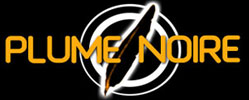
|
Max review
:. Director: Menno Meyjes
:. Starring: John Cusack, Noah Taylor
:. Running Time: 1:48
:. Year: 2002
:. Country: USA, Germany
|
Documenting Adolph Hitler's early days as an artist doesn't look like an exciting concept at first. While the idea might seem somewhat provocative and traumatic, the film isn't. Writer/Director Menno Meyjes has created an unlikely piece in light tones with unexpected humorous touches. By trying to distance his work from both its subject and the harshness of historic storytelling, Max gained at the characters' level but has a superficial resonance.
John Cusack plays Max Rothman, a Jewish avant-garde art gallery owner/artist, who is approached by a young soldier, Adolph Hitler (Noah Taylor), to exhibit his drawings. A strange and short-lived relationship will develop between the two men, somewhere between pity and friendship, before History catches up.
Max focuses on a brief moment: the transition between a human being and a monster. Since the pivotal moment where Hitler chose between art and politics is what matters here, Meyjes doesn't waste time showing us what happens next. Nor does he judge any of the characters. He is more interested in the unlikely relationship between two opposite characters, a Jew and a racist, and two opposite communication forms, art and politics. To avoid hammering us with a heavy drama, he injected strong doses of humor in his film, from amusing avant-garde happenings to suggested ironic contrasts between Hitler as an artist and what he will become. In the film Hitler is a pathetic and frustrated human being and artist. Some might complain about such a simplification of a horrific character but some events such as the Columbine massacre have shown that sometimes the most pathetic and frustrated people are the ones the most filled with hate.
An interesting aspect of Max shows the influence of two unofficial mentors in building (or awaking) Hitler's new personality. Rothman, as an artist, foresees a potential in Hitler, without really knowing what it is at first. He senses a boiling intensity inside the man and pushes him to express it until he finally discovers his visionary talents in early drawings of a Nazi world. On the other side, Hitler's superior, an officer, perceives Hitler's dangerous ideas and decides to make him a propaganda vehicle for his own convictions. It's through the communication of intense feelings, an expression tool learned though art, and the radicalization of his ideas encouraged by the officer that Hitler will become the most dangerous orator and ruler of the modern world.
The film unfortunately suffers from being superficial. The period and the location, a defeated 1918 Germany, are hardly put into historic context. While we feel the frustration of the defeat and the need to find somebody to blame—in this case the Jews—the characters lack a sense of pride inherent to their culture. Unless we are familiar with the events of WWI, it is also difficult to perceive where the ideological foundations of the Third Reich come from. The script works like a loose adaptation of the facts as the character Max has been fictionalized, being a mix of a couple of real-life people, including a gallery owner. Just like the recent Windtalkers, this movie should be seen as a vehicle that reveals a little-known part of history. In addition, the chosen approach of such a difficult subject, in half tones, seems to take the drama out of the situation, while the "what if" ending isn't conclusive at all.
Too much emphasis seems to have been put on Max's family life while his mistress, an interesting aristocrat artist (Leelee Sobieski), is hardly seen. One will also have imagined an avant-garde artist/gallery owner to be much more snobbish than what John Cusack shows. On the other hand, Noah Taylor provides an arresting performance, from a social freak and lousy artist to a sinister incarnation full of hatred.
In the last scene, a beautiful dichotomized shot sums it up: one world is dying and another one has just been born.
Fred Thom

 read our Latest Movie Reviews read our Latest Movie Reviews
 Movie Reviews since 2012 Movie Reviews since 2012
|
|


